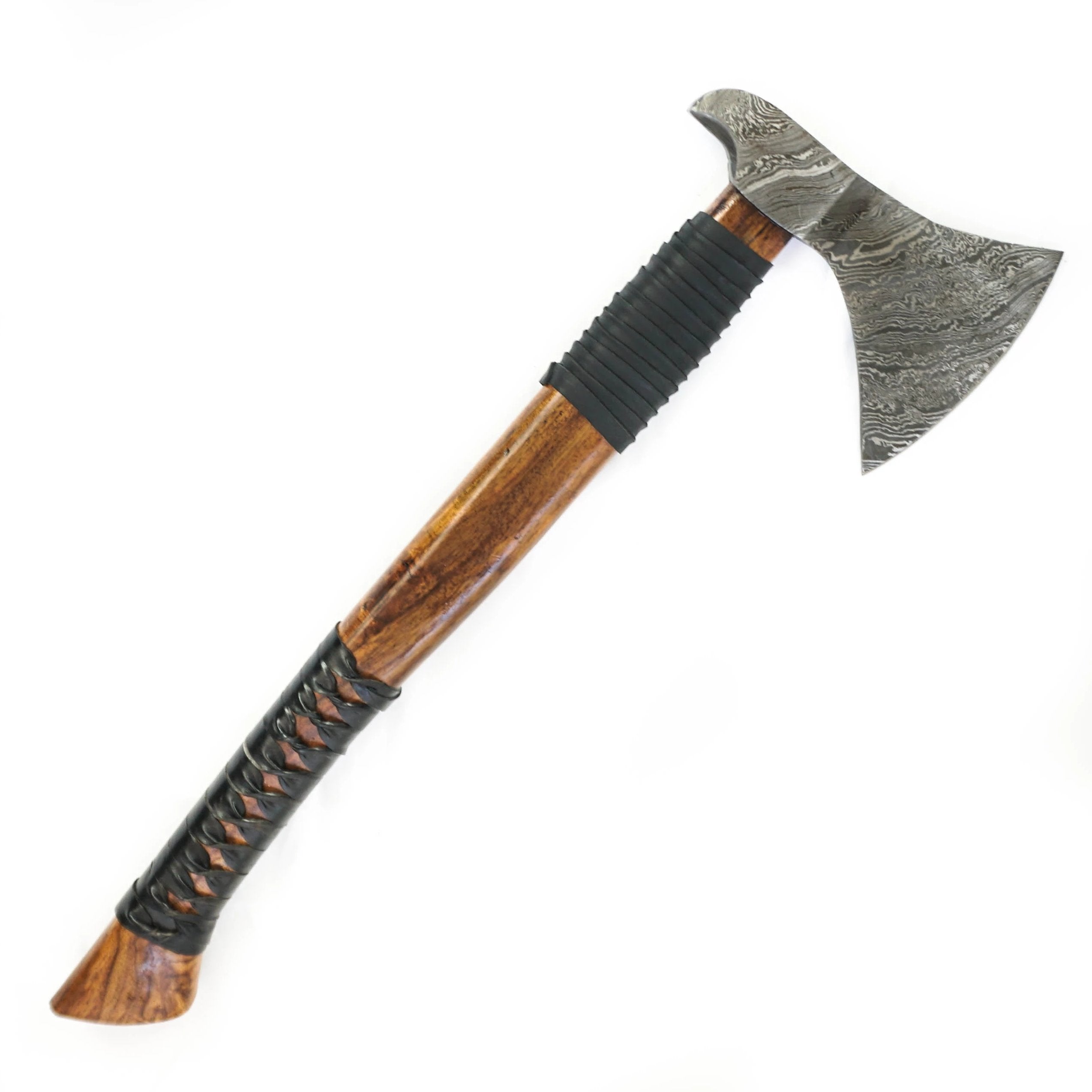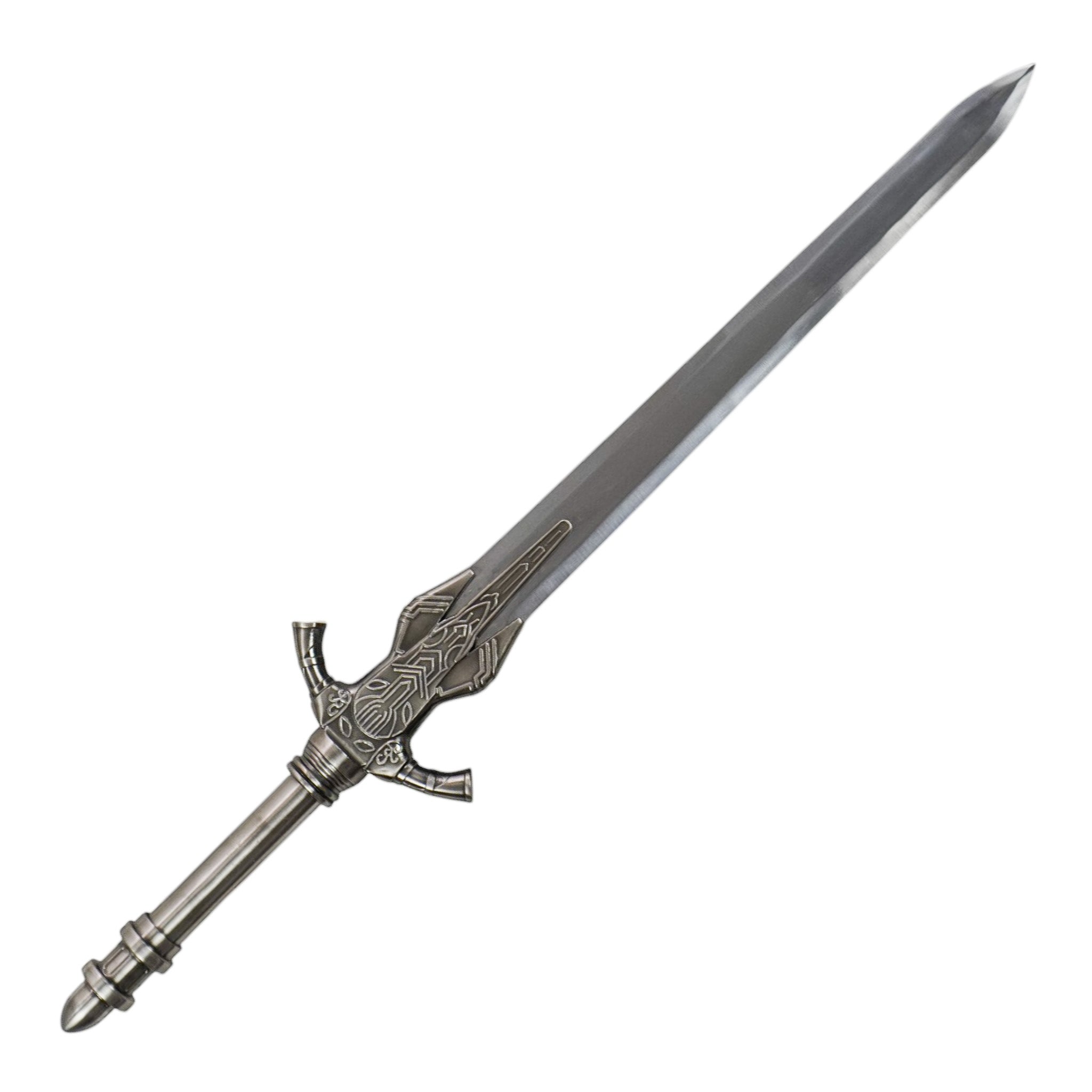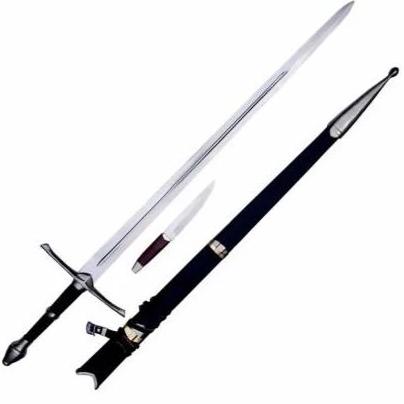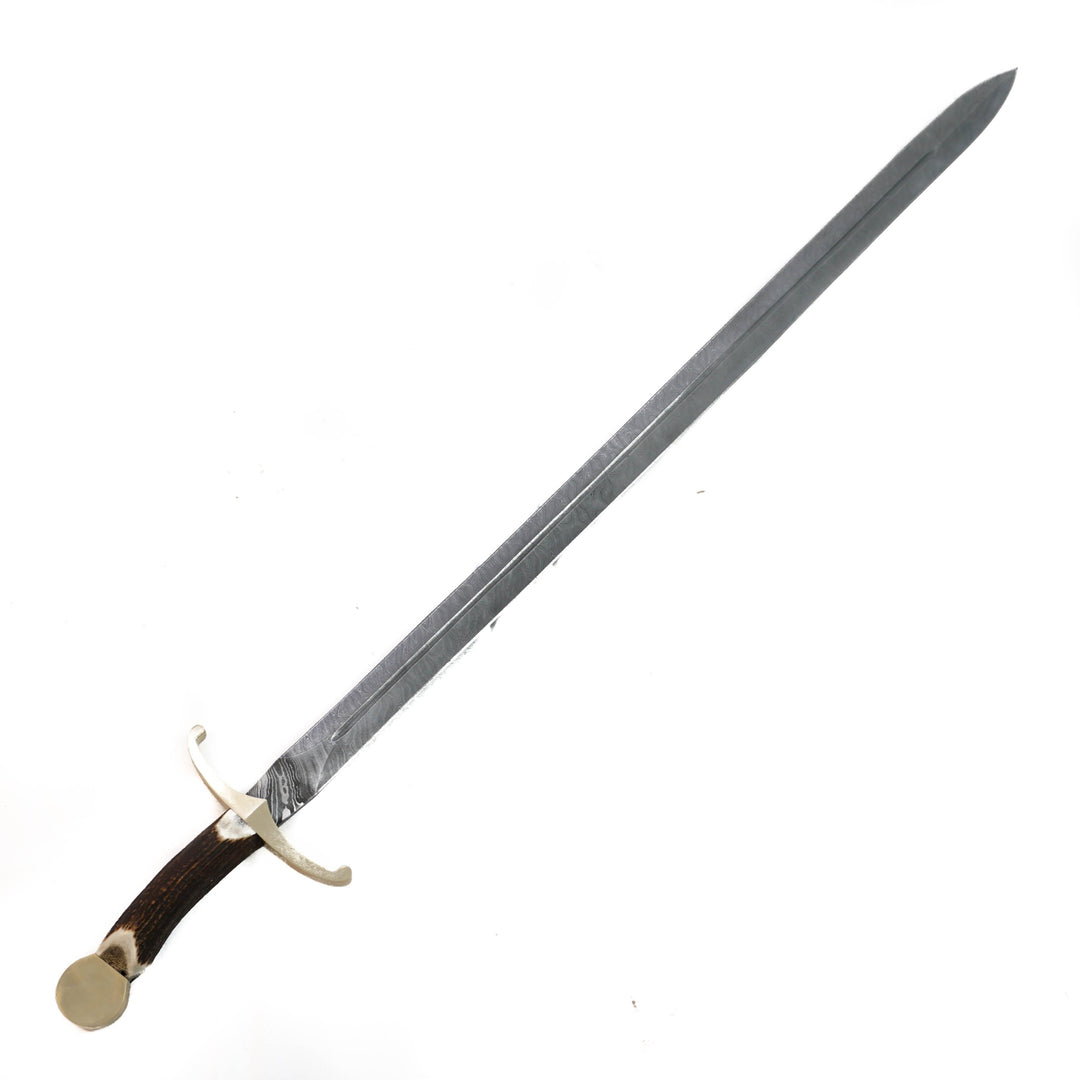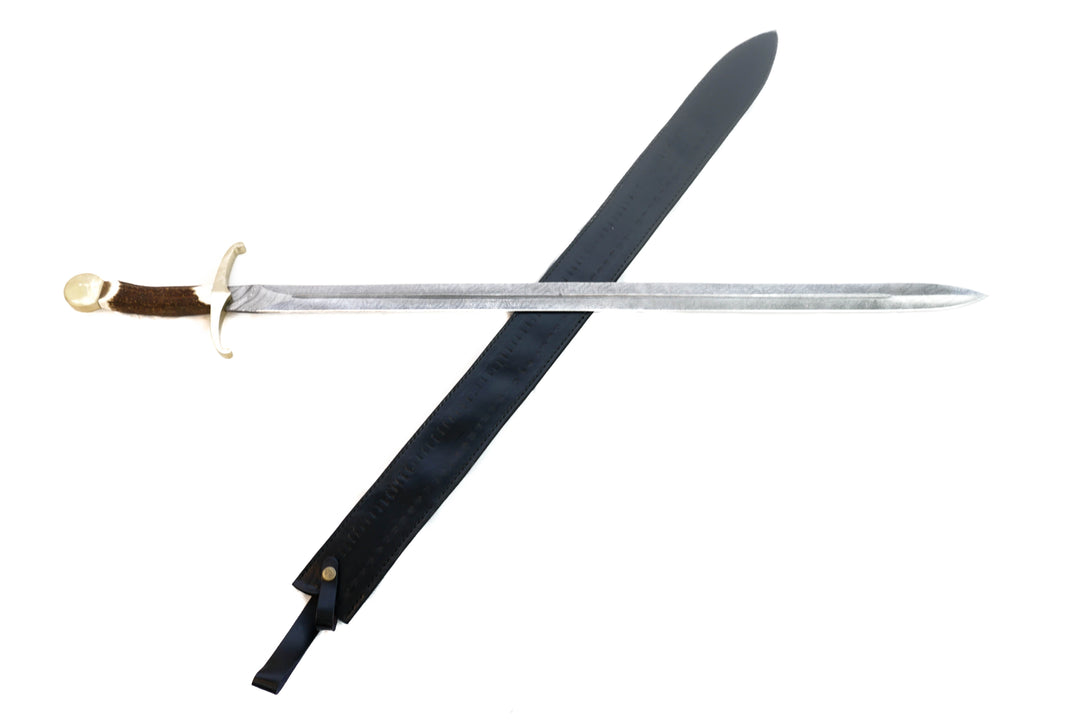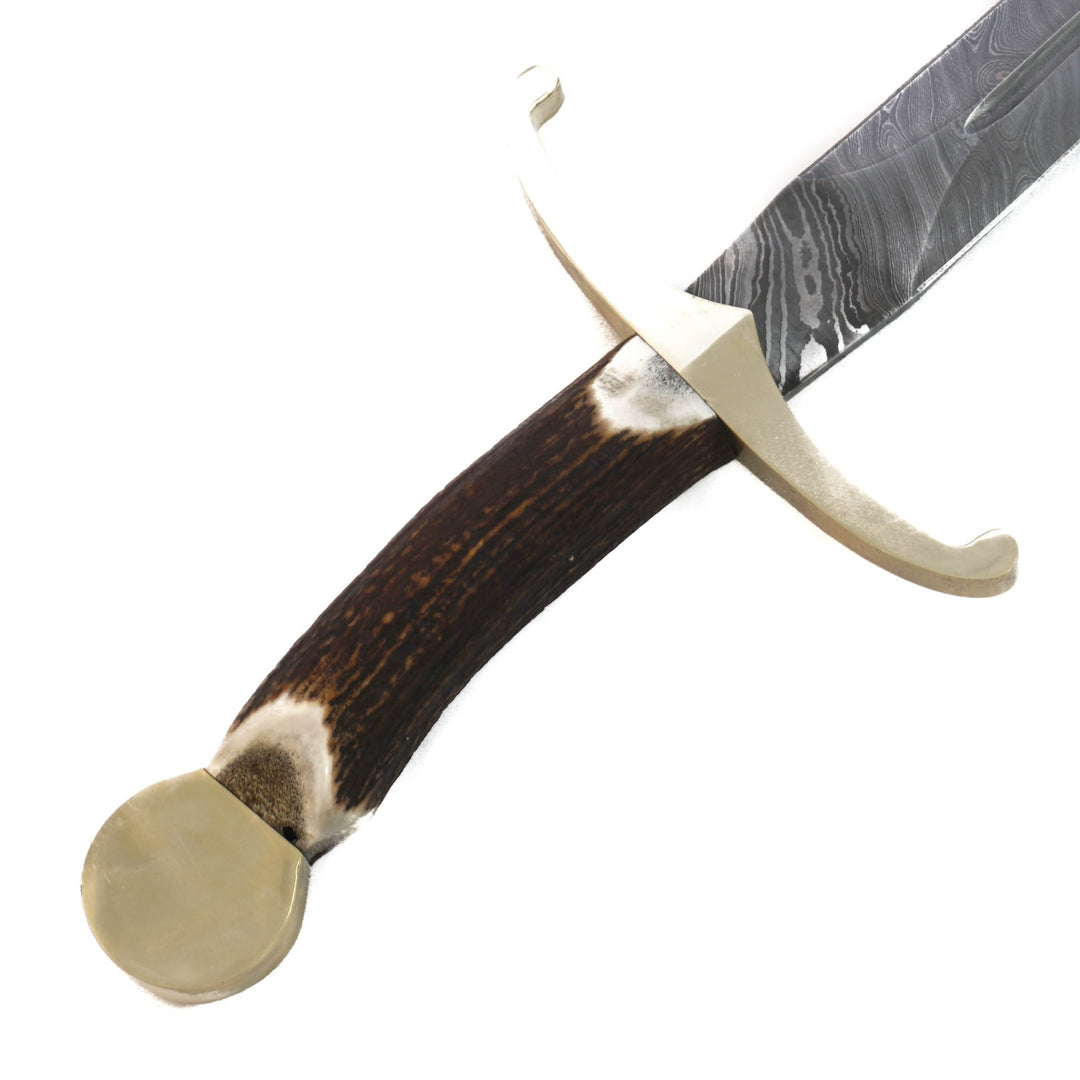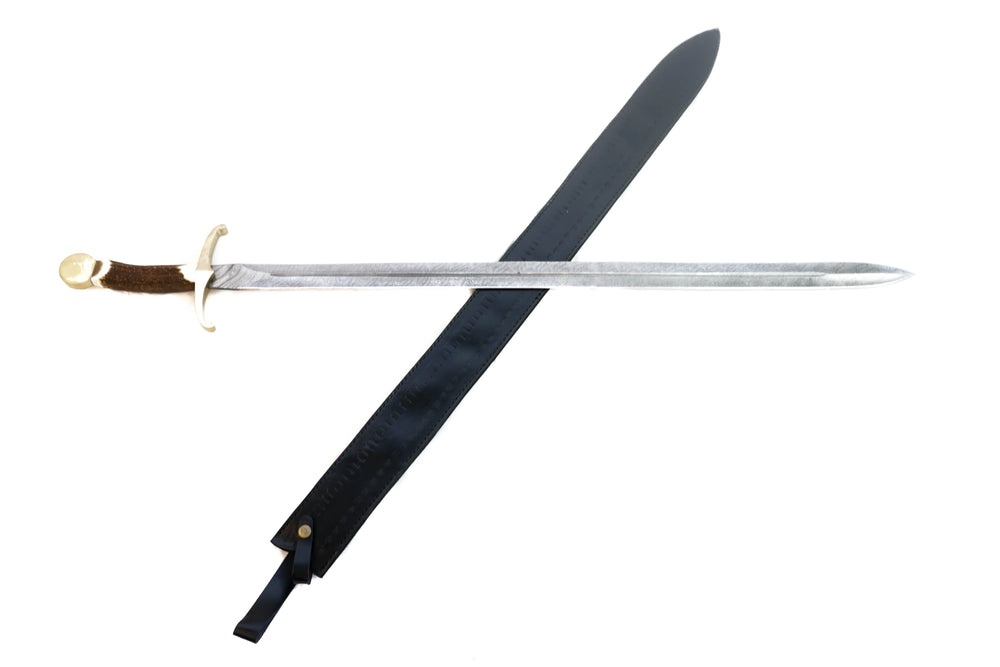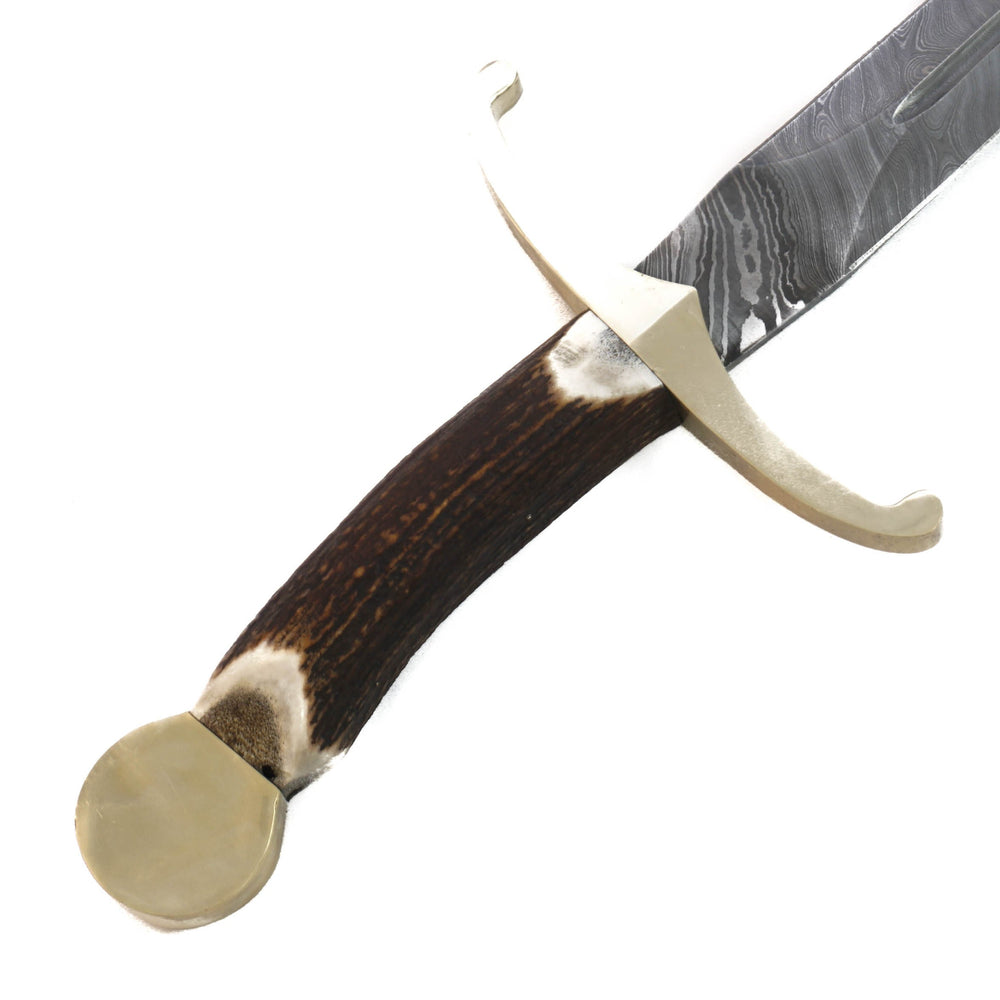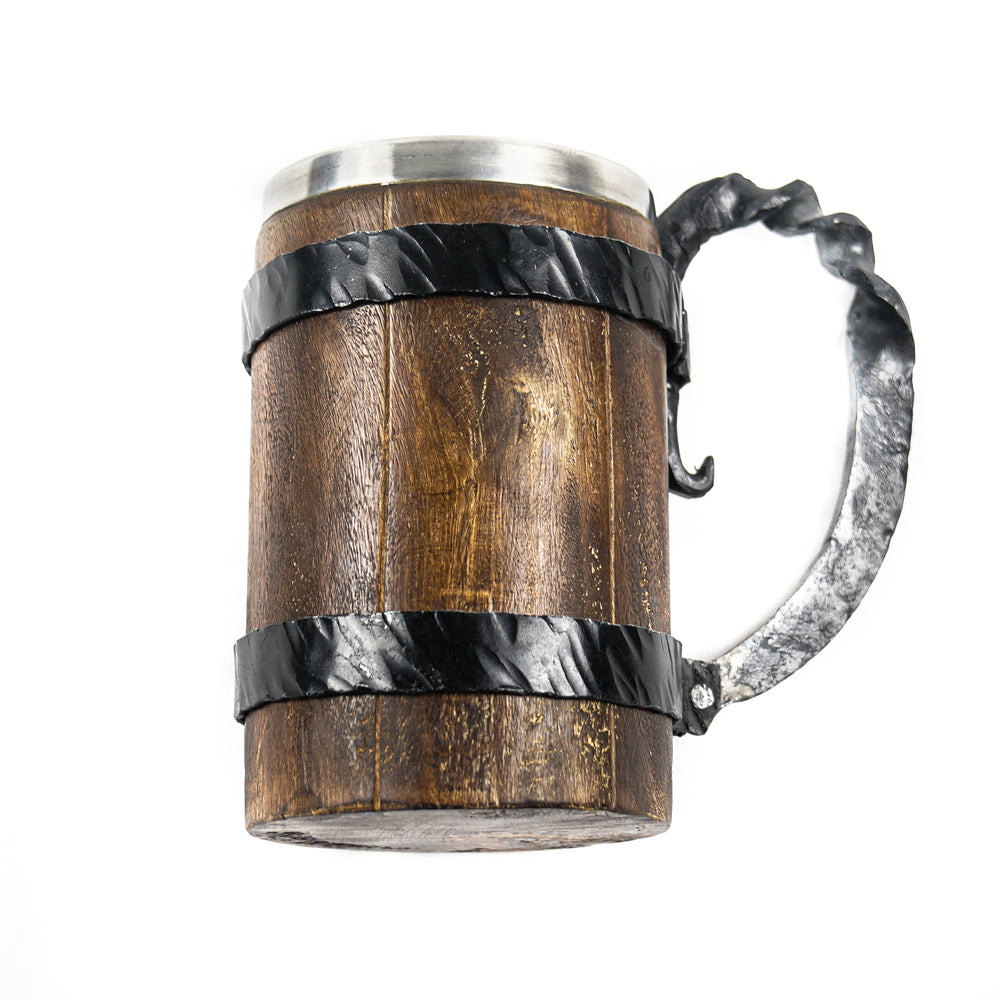The Longsword: A Masterpiece of Medieval Weaponry
The longsword stands as an emblematic weapon of the medieval and Renaissance warriors, cherished for its versatility and reach, and utilized in a variety of martial contexts.
Historical Significance:
- Time Period: The longsword's prominence spanned from the late medieval period into the Renaissance, showcasing a long history as a favored weapon among knights and soldiers.
- Bastard Sword Identity: The alternative name "bastard sword" highlights the sword's flexibility to be wielded with one or two hands, fitting neither solely into the one-handed nor the exclusive two-handed sword categories.
Blade Craftsmanship:
- Damascus Steel Construction: The blade is forged from pattern-welded Damascus steel, esteemed not only for its distinctive patterns but also for its storied resilience and edge-retention capabilities.
- Layered Steel Composition: With 352 layers of steel, the blade is engineered to endure and perform, reflecting the formidable nature of the historical longswords.
Design and Aesthetics:
- Double-Edged Blade: The straight double-edged design is a classic feature of the longsword, allowing for a variety of cutting and thrusting techniques in combat.
- Cruciform Hilt: The cross-like hilt provides both protection for the hand and a counterbalance to the blade, enhancing the sword's handling.
Handle and Ergonomics:
- Material Detail: The use of stag horn coupled with Damascus steel bolsters provides a robust and historically inspired grip, allowing for precise control and maneuverability.
- Overall Length: At 44 inches, this longsword offers substantial reach, allowing a combatant to keep opponents at a distance.
Protection and Portability:
- Leather Sheath: The inclusion of a leather sheath ensures the blade is well-protected and can be transported or stored safely.
Conclusion:
This Longsword, forged with high carbon Damascus steel, is not just a weapon; it's a piece of history recreated for enthusiasts and collectors. The robust construction and thoughtful design echo the martial prowess of those who wielded such swords in battle. This sword serves as both a tribute to the enduring legacy of the European martial tradition and as a functional piece that martial artists or reenactors would find invaluable.

